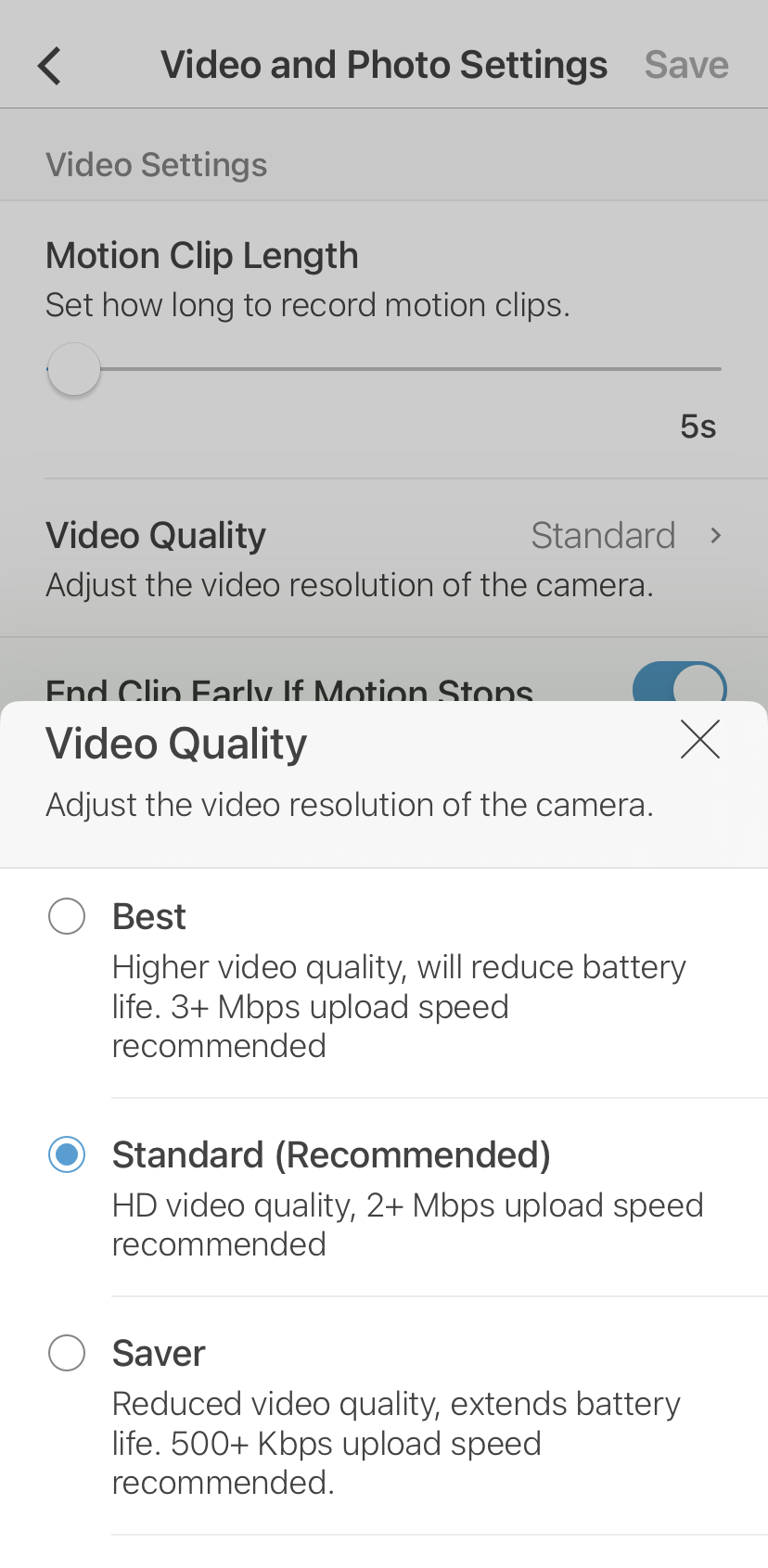Vous pouvez améliorer la qualité d'image de vos caméras Blink en ajustant les paramètres vidéo sur Best dans votre application et en vous assurant qu'elle est à portée de votre routeur Wi-Fi. La force du signal caméra vers Wi-Fi joue un rôle important dans la qualité du rendu de votre vidéo, puisque ces données sont téléchargées directement depuis les serveurs Blink vers la caméra. La force du signal de la caméra vers Sync Module n'a aucun effet sur la qualité vidéo ; cependant, vous devez disposer de trois barres de force pour maintenir les caméras en ligne.

En plus de vérifier vos paramètres vidéo et la force du signal, le positionnement de la caméra est également important car les conditions environnementales telles que l'éclairage et l'éblouissement peuvent affecter la qualité de votre vidéo.
Lorsque la force du signal entre votre caméra et votre routeur n'est pas adéquate, vous pouvez rencontrer les problèmes suivants :
- Retards ou impossibilité d'accéder aux vues en direct .
- Les clips de détection de mouvement ne sont pas enregistrés.
- Les écrans de clips animés ne sont pas entièrement visibles, la moitié étant affichée en gris uni.
- La moitié inférieure des clips vidéo est entièrement pixellisée.
Votre routeur Wi-Fi peut également disposer de paramètres permettant d'optimiser le streaming vidéo. Si votre routeur prend en charge la qualité de service (QoS) ou la gestion du trafic, assurez-vous que ces paramètres sont optimisés pour le streaming vidéo. De plus, certains routeurs ont implémenté WMM (Wi-Fi Multimedia) comme standard, conçu pour améliorer la vidéo sur les réseaux Wi-Fi.
Remarque : Nous vous déconseillons d'utiliser une option de montage tierce. Cependant, si vous utilisez un support de marque autre que Blink avec une caméra Outdoor ou Indoor (3rd Gen) , assurez-vous que le capteur infrarouge n'est pas bloqué. La LED infrarouge de vision nocturne est située sur le devant de la caméra en bas à gauche. Si cette zone est couverte, la vision nocturne de la caméra est limitée et les images nocturnes apparaîtront sombres ou floues.